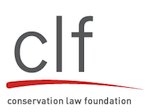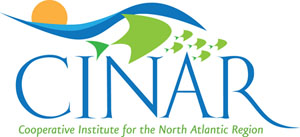Book showcases local fish of Southern Maine, New Hampshire
 Coastal Fish of Southern Maine & New Hampshire
Coastal Fish of Southern Maine & New Hampshire
Scott Richardson, editor; James Dochtermann, illustrator and contributor; Amy Safford, Michele Dionne and Scott Orringer, contributors.
Wells Reserve and Laudholm Trust, Wells, Maine. $19.90, paperback, 72 pages, ISBN 978-0-9769770-1-8 (2008).
Reviewed by Lee Bumsted
Who better to research and publish a book entitled Coastal Fish of Southern Maine & New Hampshire than the Wells Reserve and Laudholm Trust? Staff members and volunteers at the Wells National Estuarine Research Reserve in Wells, Maine, have been studying the region’s fish populations since 1992.
Scott Richardson, communications director for the Wells Reserve and the nonprofit Laudholm Trust that supports the reserve, edited this full-color 72-page guide. Michele Dionne, research director of the Wells Reserve, contributed to the book, as did former research associates James Dochtermann and Scott Orringer, and volunteer Amy Safford.
The authors state: “Our goal with this book is to offer an easily accessible and reliable reference to the fascinating, important, and often vulnerable coastal fish communities of our region.” The geographic reach of the guide is the immediate coast of New Hampshire and southern Maine as far east as the eastern edge of Casco Bay. Fish in the guide utilize near-shore habitats such as salt marshes, rivers, mud flats, and the intertidal zone.
 |
| Alewife. |
Forty-three fish species were selected for inclusion. Some of the fish, such as mummichogs, menhaden, striped bass, sticklebacks, and rainbow smelt, are quite common, while others, such as sturgeon and cod, are now rarely seen in the area.
Each fish species gets a full 9” x 9” page to itself. Its species account describes its abundance in the region, its life cycle and habitats, what it feeds on, and what feeds on it. The extent to which it is subject to fishing currently and in the past is included.
Short “points of interest” stories provide additional information and fun facts. For example, freshly caught rainbow smelt are reported to smell like cucumbers. Mummichogs have the distinction of being the first fish in outer space, travelling on Skylab 3 in 1973. Atlantic tomcod can produce antifreeze components that let them withstand below-freezing water temperatures.
Beautiful illustrations by James Dochtermann and attractive, user-friendly graphic design make this a pleasing cross between a coffee-table book and a field guide. Dochtermann provided an oil on canvas or watercolor painting of each fish, plus four full-page habitat illustrations.
 |
| Winter flounder. |
An overview of fish conservation issues provides a useful context to the species accounts. While a glossary would have been helpful, there is an index with common and scientific names. Suggestions for further reading are linked to each fish species.
Coastal Fish of Southern Maine & New Hampshire distills a good deal of research into a format that is quite suitable for older children as well as adults. It deserves a spot in middle school and high school libraries, and on the bookshelf of anyone with an interest in the region’s fish.
Coastal Fish of Southern Maine & New Hampshire is available from local booksellers and from the Laudholm Trust. It can be purchased online at: www.laudholm.org/support.htm#coastalfish
Print


















